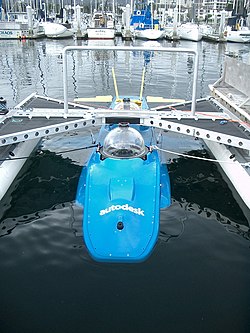This article needs to be updated.(August 2015) |
| Company type | Private |
|---|---|
| Industry | Marine engineering, Naval architecture, Submarine manufacturing |
| Founder | Graham Hawkes |
Area served | Worldwide |
| Products | Consumer submarines, ROVs, DeepFlight submersibles |
Hawkes Ocean Technologies is a marine engineering firm that specializes in consumer submarines, founded by Graham Hawkes. [1] It is headquartered in San Francisco, US. [2]
